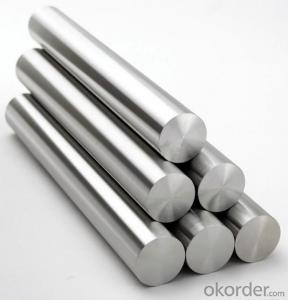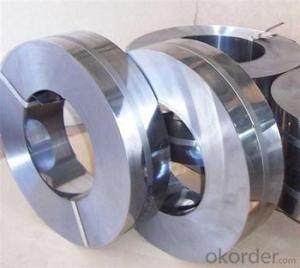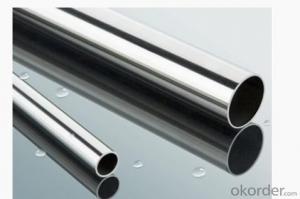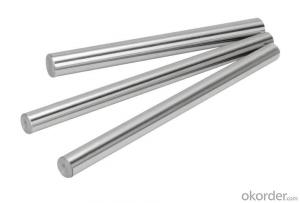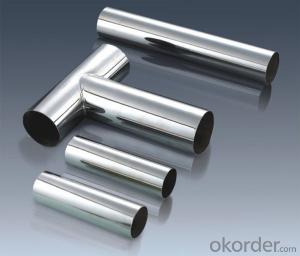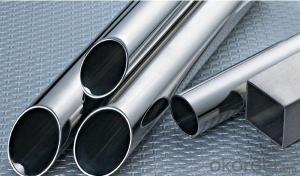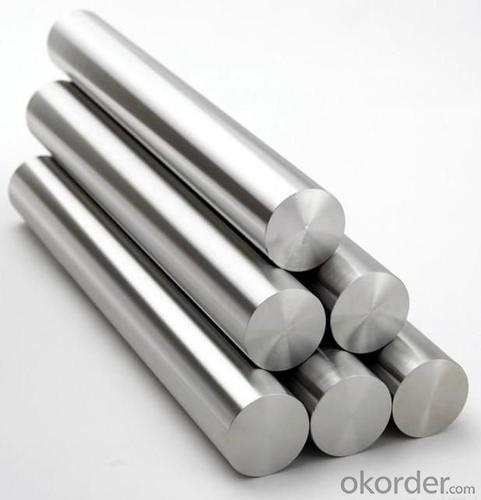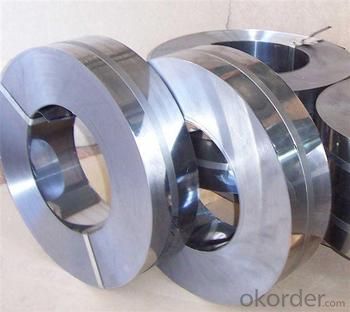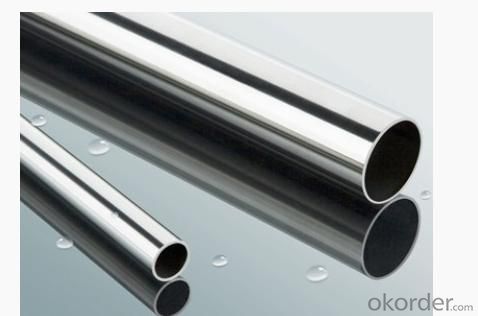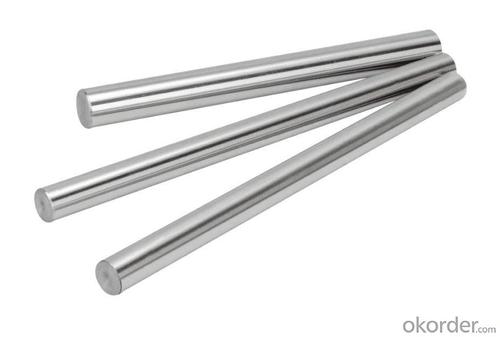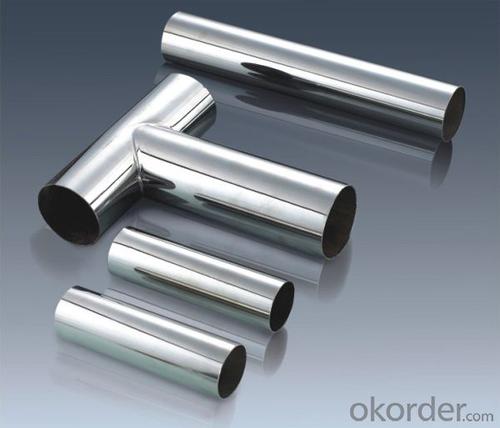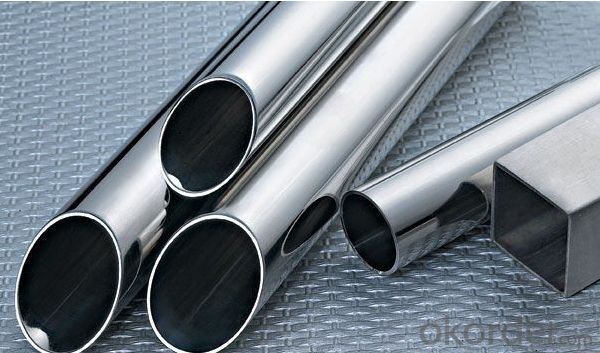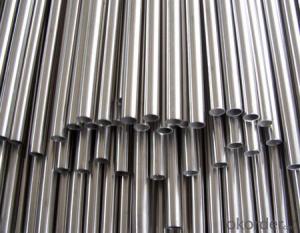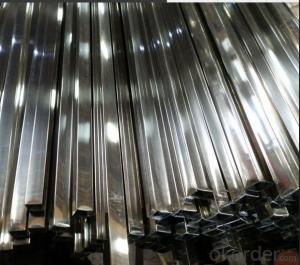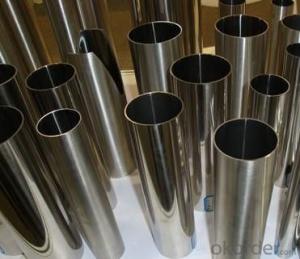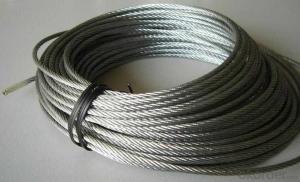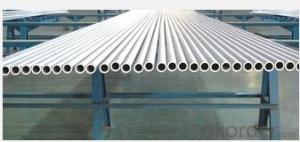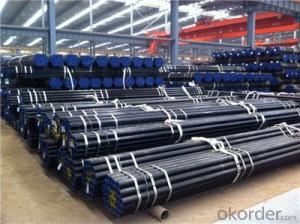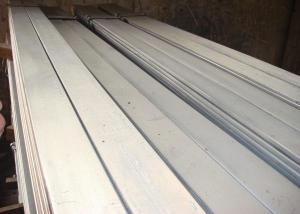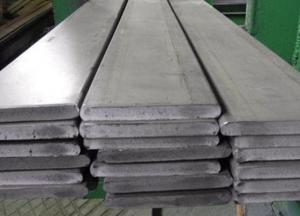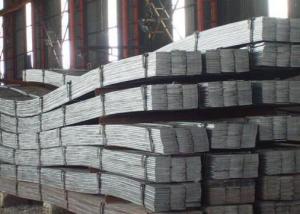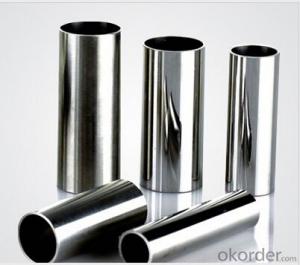Stainless Steel tube 304 raw material with best sales
- Loading Port:
- Shanghai
- Payment Terms:
- TT OR LC
- Min Order Qty:
- 1000 m.t
- Supply Capability:
- 1000000 m.t/month
OKorder Service Pledge
OKorder Financial Service
You Might Also Like
Stainless steel 304
Product Information of stainless steel:
- Width: customized
- Surface: 2B/BA/6K/8K/NO.4/HL.
- Thickness: 0.3mm - 3.0mm.
- Delivery time: 15-25 days.
- Length : As customer's requirement.
- Package: With export standard packing or customize packing.
- Payment Terms: T/T (30% deposit pay in advance and the balance before shipment) , irrevocable L/C.
Company advantage:
-Top Equipments, Leading In The Industry.
- Professional Team, Leading Innovation.
- Huge Supply Capacity Advantage, Timely and Effective Delivery.
- Modern Logistic, Fact and Convenient.
- Precise Manufacturing, Exquisite Products.
- Serve People, Create Value.
- Dimensional Network, Powerful Expansion.

- Q: What is the difference between seamless and LSAW stainless steel pipes?
- Seamless and LSAW (Longitudinal Submerged Arc Welding) stainless steel pipes are two common types of pipes used in various industries. The main difference between these pipes lies in their manufacturing process and resulting structural characteristics. Seamless stainless steel pipes are manufactured without any seams or welds. They are made by piercing a solid cylindrical billet and then extruding it to form a hollow tube. This process ensures a uniform cross-section throughout the pipe, resulting in a smooth and consistent inner and outer surface. The absence of welds eliminates the potential weak points and increases the overall strength and integrity of the pipe. Seamless pipes are generally considered to have superior corrosion resistance and are often preferred in critical applications where leak-free performance is essential. On the other hand, LSAW stainless steel pipes are made by bending and welding a steel plate or coil into a cylindrical shape. The longitudinal seam is created through a submerged arc welding process, where an electric arc is passed through the steel plate and the welding filler material. This welding technique results in a visible seam on the outside of the pipe. LSAW pipes are commonly used for large diameter and thick-walled applications, such as in oil and gas transportation, as they can be produced in longer lengths and with larger diameters than seamless pipes. In terms of cost, seamless stainless steel pipes are generally more expensive to produce than LSAW pipes due to the complex manufacturing process. However, the seamless construction offers better performance and reliability, making it a preferred choice for critical applications. LSAW pipes, on the other hand, provide a cost-effective solution for large-scale projects where the visible seam is not a concern. In summary, the key differences between seamless and LSAW stainless steel pipes lie in their manufacturing process, structural characteristics, and cost. Seamless pipes are made without any seams or welds, providing superior corrosion resistance and strength. LSAW pipes, on the other hand, are created by bending and welding a steel plate, offering a cost-effective solution for large-scale projects. The choice between these two types of pipes depends on the specific requirements of the application and the desired balance between cost and performance.
- Q: Can stainless steel pipes be used for construction purposes?
- Indeed, construction purposes can certainly make use of stainless steel pipes. This material, known for its exceptional durability and resistance to corrosion, proves itself suitable for a wide range of construction applications. It finds common employment in structural projects, providing dependable support for building frameworks, handrails, and support structures. Moreover, stainless steel pipes serve vital roles in plumbing systems, drainage systems, and HVAC systems. Notably, they often take precedence in construction endeavors that prioritize hygiene and cleanliness, such as hospitals, food processing plants, and laboratories. In summary, stainless steel pipes deliver exceptional strength, longevity, and resistance to rust and corrosion, rendering them an unwavering choice for construction endeavors.
- Q: How do you prevent pressure loss in stainless steel pipes?
- To prevent pressure loss in stainless steel pipes, there are a few key measures that can be taken: 1. Proper pipe sizing: Ensure that the diameter of the stainless steel pipe is appropriate for the flow rate and pressure requirements of the system. Undersized pipes can result in increased pressure loss due to higher fluid velocities. 2. Minimize pipe length and bends: Keep the length of the stainless steel pipe as short as possible and reduce the number of bends or elbows. Longer pipes and multiple bends introduce friction and turbulence, leading to pressure loss. 3. Smooth interior surface: Use stainless steel pipes with a smooth interior surface finish. This helps to reduce frictional resistance and turbulence, thereby minimizing pressure loss. 4. Avoid unnecessary fittings and valves: Each fitting or valve in a stainless steel pipe system introduces additional pressure loss. Minimize the use of unnecessary fittings and valves, and opt for those with low resistance to maintain pressure. 5. Proper installation: Ensure that the stainless steel pipes are installed correctly, with proper alignment and support. Misaligned or poorly supported pipes can lead to excessive stress and potential deformation, causing pressure loss. 6. Regular maintenance and cleaning: Periodically inspect and clean the stainless steel pipes to remove any accumulated scale, debris, or deposits. Such obstructions can restrict flow and result in pressure loss. 7. Consider flow control devices: Depending on the application, incorporating flow control devices like flow restrictors, pressure regulators, or flow meters can help maintain optimal pressure levels in the stainless steel pipe system. By following these measures, pressure loss in stainless steel pipes can be minimized, ensuring efficient and effective fluid transportation within the system.
- Q: Are stainless steel pipes suitable for hygienic applications?
- Yes, stainless steel pipes are suitable for hygienic applications. Stainless steel is widely used in industries such as food processing, pharmaceuticals, and dairy, where maintaining cleanliness and preventing contamination is crucial. Stainless steel pipes have several properties that make them ideal for hygienic applications. Firstly, stainless steel is highly resistant to corrosion, which is important for maintaining hygiene and preventing the growth of bacteria or other pathogens. It does not rust or corrode easily, even when exposed to various chemicals and cleaning agents used in hygienic environments. This resistance to corrosion ensures the integrity of the pipes and prevents any contamination from occurring. Secondly, stainless steel has a smooth, non-porous surface that is easy to clean and sanitize. The smoothness of the surface prevents the accumulation of dirt, bacteria, or other particles, making it easier to maintain a hygienic environment. Stainless steel pipes can be easily cleaned using various cleaning methods, including steam, high-pressure water, or chemical cleaning agents. Furthermore, stainless steel is a durable and long-lasting material. It can withstand high temperatures and pressures, making it suitable for a wide range of hygienic applications. Stainless steel pipes can be used for transporting fluids, gases, or other materials without compromising their hygienic properties. In addition, stainless steel is a non-reactive material, meaning it does not react with the substances it comes into contact with. This property is important for preventing any contamination or alteration of the substances being transported through the pipes. Overall, stainless steel pipes are highly suitable for hygienic applications due to their corrosion resistance, smooth surface, durability, and non-reactive properties. They provide a reliable and hygienic solution for industries where cleanliness and prevention of contamination are of utmost importance.
- Q: Are stainless steel pipes suitable for architectural applications?
- Yes, stainless steel pipes are suitable for architectural applications. Stainless steel is a highly durable and corrosion-resistant material that can withstand harsh environmental conditions, making it ideal for architectural projects. It is commonly used in structural applications such as handrails, guardrails, and balustrades due to its strength and aesthetic appeal. Stainless steel pipes are also favored for their versatility, as they can be easily shaped and welded to create unique designs and structures. Additionally, stainless steel pipes offer low maintenance requirements and can be polished to a high shine, enhancing the overall aesthetics of architectural projects. Overall, stainless steel pipes are an excellent choice for architectural applications due to their durability, corrosion resistance, versatility, and aesthetic appeal.
- Q: What is the cost of stainless steel pipes?
- The cost of stainless steel pipes can vary depending on several factors. These factors include the size and thickness of the pipes, the grade of stainless steel used, the quantity being purchased, and the current market conditions. Generally, stainless steel pipes are more expensive compared to other materials due to their durability, corrosion resistance, and aesthetic appeal. It is recommended to contact suppliers or manufacturers to get specific pricing information based on your requirements.
- Q: What is the maximum pressure rating for stainless steel pipe fittings?
- The maximum pressure rating for stainless steel pipe fittings varies depending on several factors such as the material grade, size, and temperature. Generally, stainless steel pipe fittings can handle high-pressure applications due to their inherent strength and corrosion resistance. The pressure rating of these fittings can range from 150 psi (pounds per square inch) to as high as 10,000 psi, depending on the specific fitting and its intended use. It is essential to consult the manufacturer's documentation or industry standards such as ASME B16.11 or ASME B16.9 to determine the maximum pressure rating for a specific stainless steel pipe fitting. Additionally, it is crucial to consider other factors such as the type of sealing method used, compatibility with the fluid being conveyed, and any additional safety measures required in high-pressure systems.
- Q: What is the difference between seamless and hot-rolled stainless steel pipes?
- Seamless and hot-rolled stainless steel pipes are both commonly used in various industries for their durability and corrosion resistance. However, there are some key differences between the two. 1. Manufacturing process: Seamless stainless steel pipes are manufactured through a process called piercing, where a solid billet is heated and pierced to create a hollow tube. On the other hand, hot-rolled stainless steel pipes are made by heating a solid billet or slab and rolling it into a desired shape. 2. Appearance: Seamless stainless steel pipes have a smooth and uniform appearance due to their manufacturing process. On the contrary, hot-rolled stainless steel pipes have a rough and scaly surface due to the rolling process. 3. Strength: Seamless stainless steel pipes generally have higher strength compared to hot-rolled stainless steel pipes. This is because the seamless pipes undergo additional processes like cold drawing or cold rolling, which enhance their strength. 4. Wall thickness: Seamless stainless steel pipes can have a more precise wall thickness due to their manufacturing process. Hot-rolled stainless steel pipes, on the other hand, may have variations in wall thickness due to the rolling process. 5. Cost: Hot-rolled stainless steel pipes are generally more cost-effective compared to seamless pipes. This is because the manufacturing process of hot-rolled pipes is simpler and requires less time and energy. 6. Availability: Hot-rolled stainless steel pipes are more readily available in the market compared to seamless pipes. This is because the manufacturing process of hot-rolled pipes is faster, allowing for quicker production and availability. In conclusion, while both seamless and hot-rolled stainless steel pipes offer excellent corrosion resistance and durability, they differ in terms of manufacturing process, appearance, strength, wall thickness, cost, and availability. The choice between the two will depend on the specific requirements and preferences of the application or industry in which they will be used.
- Q: Can magnets attract stainless steel tubes?
- Stainless steel is becoming more and more popular because of its beautiful appearance, corrosion resistance and not easy to damage. More and more pots, city sculpture, architecture, decoration room etc. the use of stainless steel, stainless steel on discrimination but people do not know, some customers buy stainless steel kitchenware, stainless steel utensils with magnets in to try to try. It is stainless steel that attracts the magnet, but stainless steel can not be sucked. It seems that there is a misunderstanding about stainless steel.
- Q: Can stainless steel pipes be used for nuclear power applications?
- Yes, stainless steel pipes can be used for nuclear power applications. Stainless steel is known for its corrosion resistance, high strength, and ability to withstand high temperatures, making it suitable for various demanding environments, including nuclear power plants. Additionally, stainless steel's low reactivity with nuclear materials and its ability to maintain structural integrity under radiation exposure further make it a preferred choice for nuclear power applications.
Send your message to us
Stainless Steel tube 304 raw material with best sales
- Loading Port:
- Shanghai
- Payment Terms:
- TT OR LC
- Min Order Qty:
- 1000 m.t
- Supply Capability:
- 1000000 m.t/month
OKorder Service Pledge
OKorder Financial Service
Similar products
Hot products
Hot Searches
Related keywords
